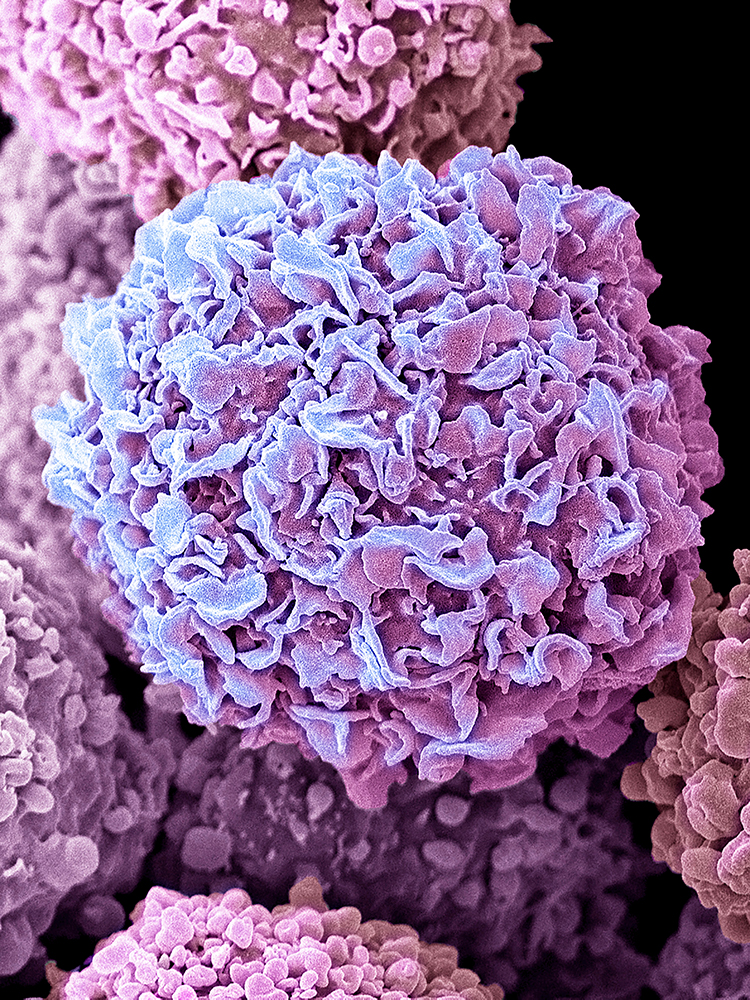Dangerous, dormant cells.
Text: Andreas Lorenz-Meyer
In some forms of cancer, such as breast cancer, cells from the primary tumor can migrate to other tissues, where they enter a state of dormancy. This dormancy can be quite deceptive, because the “sleeper” cells are capable of evading cancer treatment, after which they may wake up again at any time and resume their growth.
Mohamed Bentires-Alj, who, along with his team at the Department of Biomedicine, studies metastasis in breast cancer, among other subjects, is searching for ways to defuse these hidden cancer cells. He and his team are currently carrying out a study in mice to analyze the phenomenon. In the mice, the breast cancer cells had migrated to the liver and subsequently entered a state of dormancy. The team's tests revealed that the body's own immune cells play a key role: They induce dormancy in the breast cancer cells by releasing the signaling molecule interferon gamma. This halts the cell cycle in the tumor cells, preventing them from dividing.
Yet there are other cells playing for the opposing team: these are known as hepatic stellate cells. Hepatic stellate cells can suppress the immune cells responsible for ensuring that the cancer cells remain dormant. And that is when it happens: The sleeper cells start dividing again and a new tumor grows.
Barrier to long-term recovery
For Bentires-Alj, the dormant cancer cells represent one of the "main barriers to long-term recovery in patients with breast cancer." He aims to decode the mechanisms at work and is currently involved in a project focused on preventive lifestyle factors. "These factors should prevent the cancer cells from reactivating – or even better: eliminate them altogether."
Bentires-Alj also wants to determine which treatments are the most effective. He is currently still working on securing funding for the project. And there is yet another issue complicating the matter: Breast cancer not only spreads to the liver, but also to the bones, lungs and brain. The cells in those regions – and the molecular mechanisms involved – may be different from those in the liver, and that raises additional research questions that his lab is actively pursuing.
More articles in this issue of UNI NOVA (May 2023).

